Welcome to part five of The Beginner’s Guide to Freediving, the best place to start your freediving journey. If you’re planning to start freediving, this chapter talks you through the essential equipment for freediving, everything from masks to fins to lanyards.
Equipment for Freediving – the basics
In this article we’ll look at all the important equipment for freediving you need as you get started and then progress as you learn more sophisticated techniques. We’ll cover the basic equipment for freediving, such as your mask, snorkel and fins, to advanced equipment for freediving such as specialist suits and dive computers.
If you’re concerned about the amount of stuff you’ll need, don’t be – freediving equipment is simpler than SCUBA equipment, less likely to go wrong, doesn’t need filling and rarely needs servicing. It’s usually less expensive, too, and if you look after it, will last indefinitely.
One top tip before we continue: After using your kit, always make sure you rinse or wash your kit in clean, fresh water, before drying it and storing it somewhere dark. Saltwater and strong sunlight are your kit’s enemy.
Equipment for Freediving – Mask
There are a bewildering array of freediving masks on the market and it can be difficult to decide which one’s best for you. Taking a course, where you can chat to an instructor about what mask might suit the shape of your face and your needs is the best option – you’ll be able to try out different masks, too. You can also go to your local dive store to try masks on, or borrow one from a friend. All masks are adjustable and having two, keeping one as a backup in case you lose the other. Here are some of the things you should be looking out for:
- Low volume – A lower volume of air inside the mask means less air from your lungs is required to equalize.
- Clear lenses – Some masks (often aimed at spearfishers) have mirrored or tinted lenses. You need clear lenses when freediving so your buddy can see your eyes and assess your condition during the last part of your dive. Most lenses are tempered glass and mounted on a single plane. These are the most durable and will give you perfect vision. There are also masks with plastic lenses, which have been used by very deep freedivers who like the way the mask bends around their face at depth, although these are not as solidly built and can distort your vision.
- Nose pocket – The nose pocket enables you to equalise the air in the mask, countering the risk of mask squeeze in which the capillaries in the eyes rupture, making the whites of your eyes red. Don’t worry if you think your nose may be too big. Nose pockets fit almost every sized nose.
- Soft silicone skirt – You want your mask to be comfortable and form a good seal around your face. Men often find that water leaks in because they have stubble or a moustache. This can be prevented by shaving, improving the seal using Vaseline, or having a perfectly fitted mask. You can get clear, black or coloured silicone skirts; a clear skirt lets in more light but this can be distracting and cause ‘ghosting’ in your vision. In the end it comes down to style and personal preference.
When you buy your first mask, unless it says otherwise, you will need to remove a protective film from the lenses that was added during the manufacturing process, as it will cause your mask to fog. This can be done with washing up liquid, toothpaste, lighter fluid or a purpose made product. Before you dive, apply a mask defogger or some saliva to the lenses before lightly rinsing in water. This should ensure your mask doesn’t fog up during the dive.
Equipment for Freediving – Snorkel
There are many snorkels on the market with fancy features like purge valves, splash guards, and other modifications. These are expensive and needlessly complicated. Freediving snorkels should be as simple as possible for ease of use and hydrodynamics under the water. This is what you should look for:
- Soft silicone mouthpiece that is comfortable so you don’t notice it in your mouth
- Simple, straight or slightly curved bore (this is the pipe that sticks up out of the water)
- Means of attaching it to your mask or a flotation device
It’s always advisable to have a spare and many snorkels are so soft and flexible that they can be stored in a pocket or even tied in a knot. Snorkels should always be taken out of your mouth before you dive for safety reasons. When freediving recreationally, you can attach the snorkel to your mask. When training for depth, you should leave it floating at the surface as it can create drag. Just make sure that your buddy grabs it when you dive or it’s attached to a buoy so you can retrieve it later!
Equipment for Freediving – Fins
These are your motor and are one of the most important parts of your equipment for freediving. You can either use bi-fins or a monofin. Bi-fins are best for recreational diving, buddying and teaching and are similar to what you might have called flippers as a child. A monofin, in which both your feet are inserted into a single, fishtail-like fin, is best for depth and distance. Both can be made from different materials, with the most expensive being carbon fiber. Fins also come in different stiffness’s, which suit different physiques and different kinds of freediving. If you’re coming to freediving after trying Scuba diving, you can start with scuba fins and move to freediving fins when you’re confident with your technique as scuba gear is very different from equipment for freediving. Here are some things to look out for:
Bi-fins
The most useful for freediving. Bi-fins enable you to maneuver more easily than a monofin and are ideal for recreational freediving and also mean you can be a more effective buddy. Here are the main characteristics of freediving bi-fins.
- Long – This is the most obvious characteristic of freediving fins. Longer fins enable you to create more power with every kick of your legs but with less effort. It’s a balance between selecting the correct stiffness for the discipline you are doing and for your size and muscle strength.
- Full foot fins – Freediving fins enclose the whole of your foot, rather than slipping over the front of your foot and being held in place with a strap at the back. This gives maximum transference of power from your leg down into the fin. You should buy a pair large enough to wear a pair of 2mm or 3mm neoprene socks. This helps protect your feet against chafing and also keeps them warm when you’re diving in colder conditions.
- Fin retainers – These are inexpensive rubber straps that are worn around the ankle and over the heel of the fin. They ensure that if your fin was accidentally knocked off in the water, it’s far less likely to fall off your foot. This is invaluable when you are wearing very expensive carbon fins…
Monofin
Monofins transform freedivers from aquatic apes to dolphins and mermaids. Once mastered,the monofin is far more effective than bi-fins for speed and depth. They require more of you physically but can displace more water, enabling you to use your whole body to propel yourself through the water. The disadvantage is that it is difficult to manoeuvre in. Here are some features of monofins
- Foot pockets – These are either designed for comfort (and so use the same foot pockets as bi-fins) or performance (with very tight-fitting foot pockets). Performance foot pockets are also often built at an angles to the rest of the blade, to ensure it’s in line with the rest of your body when gliding.
- Different stiffness and materials – The stiffness of the blade and the angle of the foot pocket relative to the blade have more of an impact than the materials the monofin is made from.
- Wings – these are often added to the side edges of the monofin to keep water on the blade when it’s being moved.
Equipment for Freediving – Weight systems and weight
Weight is usually worn by freedivers to compensate for the buoyancy of their wetsuit and to ensure that they are neutrally buoyant at the desired depth. For recreational freediving along a shallow reef, for example, this may be set as shallow as four metres. However, for any diving deeper than twelve metres, neutral buoyancy is usually set at around ten metres or deeper for safety reasons.
Recreational freediving, competitive freediving and spearfishing all have their own unique weight setups. We’ll concentrate on the recreational freediving setup here, with further articles covering spearfishing and competitive freediving at a later date.
Weight belts and weights
Weight belts are the fourth of the four essential items of equipment for freediving, after the mask and snorkel and fins. There are a few key characteristics to keep an eye out for.
- Always flexible – This is so that it can be worn tight on the hips and will not fall off when you’re upside-down in the water. It also means it’ll stay tight, even when you and your wetsuit are compressed under pressure at depth. Usually made from rubber.
- Worn on the hips – So that there is nothing to restrict free abdominal breathing.
- Quick release – If in trouble, either the diver or their buddy can release the belt with one pull, improving buoyancy and helping a diver in trouble return to the surface
- Small, evenly spaced weights – To improve hydrodynamics and balance in the water.
It’s worth noting that some freedivers who don’t wear weight will still wear a belt to help seal the two halves of their suit in order to prevent flushing.
Equipment for Freediving – Exposure Suits
Freedivers usually need to wear an exposure suit to protect them against the elements. This usually means a wetsuit as the primary focus is normally keeping the diver warm. However in very warm water, freedivers often wear neutrally buoyant suits to protect them from the sun, jellyfish, or other hazards. Thin and tight suits are also often used in the pool to aid slick movement through the water. Suits can also be used in the pool to aid hydrodynamics and streamlining through the water. Finishes can be almost any color and stitching as well as camouflage. If you are new to freediving but have a wetsuit for surfing or a semi-dry suit for Scuba diving then these too can be used as you start your freediving journey. Here we will look at different kinds of suits that freedivers usually wear.
Wetsuits
- Materials – Wetsuits are normally made from different qualities, grades and thicknesses of neoprene. The thickness entirely depends on where you are diving and how cold you get. It is important to choose the thinnest neoprene that still keeps you warm, as it is easier to breathe in a thinner suit and you will need less weight.
- Linings – Freediving suits can be made from uncoated or ‘open cell’ neoprene, closed cell ‘smoothskin’, or covered in nylon. Open cell and smoothskin suits are vulnerable to tearing but usually keep you warmer in the water. There are many options for suits, including an option where a layer of nylon is sandwiched in between open cell and smoothskin for more durability. In deciding what is best for you it is important to consider the environment you will be diving in before deciding on colour or other fashion. If you are doing a lot of spearfishing, recreational diving, teaching, or are clumsy, then a durable nylon exterior for your suit is best.
- Composition – Freediving suits are usually two-piece with an integrated hood. The bottoms are either high waist trousers or dungaree-style ‘farmer johns’. The suits are designed to be super flexible while allowing only the minimal amount of outside water in (known as flushing), keeping you warm.
- Custom made – Many manufacturers offer custom made suits and these are a great idea if your body isn’t what’s considered to be a normal shape. Manufacturers are slowly bringing suits for women onto the market, however these still don’t suit all shapes and sizes, so a custom made suit is often the best option and not much more expensive than an off-the peg one.
- Semi-dry scuba suits can be used for freediving, as well as triathlon and surfing suits as long as they are warm enough and provide enough elasticity to enable you to breathe easily. These kinds of suits do not come with a hood so you’ll need to get one separately. It’s important to keep warm protect your ears from exostosis – a condition caused by repeated exposure of your eardrum to cold water leading to the increased likelihood of ear infections and hearing difficulties.
Pool suits
- Pool suits are worn for dynamic disciplines and aid your movement through the water. The suits fit tightly around your body and create less drag than bare skin.
- Pool suits are usually one piece and do not have a hood – a swimming cap is usually worn instead.
- They are smooth-skin neoprene on the outside with nylon on the inside to prevent tearing.
Dive skins
- Materials – wetsuits are normally made from different qualities, grades and thicknesses of neoprene. The thickness entirely depends on where you are diving and how cold you get. It is important to choose the thinnest neoprene that still keeps you warm as it is easier to breathe in a thinner suit and you will need less weight.
Gloves
Gloves come in different thicknesses and are ideal for protecting your hands from the cold, sunburn, and marine life. Ideally you want the thinnest glove possible so that you can still use your hands to equalize and deal with other equipment, but they should be thick enough to keep you warm in cold water.
Equipment for Freediving – Lanyard
A freediving lanyard is mandatory in freediving competitions and advisable for most recreational depth training dives. Even on relatively shallow dives, if the visibility is poor or the natural bottom deeper than the bottom of the line, a lanyard should be worn. The lanyard connects the diver to the line and means that the entire line can be brought up with the diver attached to it in case of an emergency.
Lanyard features
- Most lanyards have a one-handed quick release mechanism in case of entanglement, and can also be easily released via a non-locking carabiner that attaches to the freediving line.
- Lanyards are not normally longer than a meter.
- They can be homemade or bought from specialist manufacturers.
Equipment for Freediving – Computer
A freediving computer is a specialist diving watch and is a useful investment that fulfills many functions, from safety to helping you train. Some scuba dive computers have freediving modes, too.
Features to look out for:
- The computer should have a surface interval time. This registers the time you spend on the surface in between dives. It is very useful to keep an eye on this to make sure that you are fully rested in between dives and minimize the already small risk of decompression sickness.
- Current depth – The computer measures depth so that you can see how deep you are and, usefully, check at which point you become neutrally buoyant.
- Maximum depth – If you are simply doing a depth dive then the computer will register the max depth you reach, so there’s no need to distract yourself by constantly checking your wrist.
- Depth alarms – A depth alarm is useful if you’re using mouth-fill equalization or are diving on a line deeper than the depth you want to dive to. Often the alarms are quiet, so freedivers will wear them in their hoods.
- Water temperature – Useful to record in your logbook so you can chart temperatures at dive sites throughout the year, how that impacted on your performance and also make a note of what thickness of suit you needed.
- Current time – Seemingly self-explanatory, but it’s important you keep track of how long you have been in the water for.
- Dive time – Measures the duration of each dive.
- Stopwatch and countdown timer – to count down for a dive, to time a diver under the water and plan when to dive if you’re buddying them them. Also handy for use in the pool when training.
Equipment for Freediving – Buoy and line
For depth freediving you will need a line, which can be secured to the side of a boat, from a platform, or from a buoy. Even if you are freediving recreationally, it is advisable to have a buoy so that you can store drinking water, have something to rest on and increase your visibility to water traffic.
Desirable features in a buoy:
- Is sufficiently buoyant to support the weight of the line and at least one diver.
- Has a hand hold for resting divers.
- Is decorated in colors signifying ‘diver down’ or has a ‘diver down’ flag attached.
- Has room to store equipment for freediving and drinking water
Desirable features in a line:
- Between 8 and 15mm in diameter for strength.
- Should be white or another color highly visible in water.
- Clear markings for depth measurement and easily adjustable.
- Has a weight and bottom plate to avoid any risk of entanglement and to keep it as vertical as possible.
Setting up a buoy and line for freediving should always be done with an instructor for the first time, as this will ensure you have it set up correctly for safety and ease of use.
Other equipment for freediving
- Nose clip – For the pool or hands-free equalization during depth disciplines.
- Fluid goggles – Used in depth disciplines in conjunction with the nose clip, they feature corrective lenses filled with water, improving your vision underwater.
Buying the best Freediving Equipment
Go Freediving sells everything you need to be a freediver, from fins, to lanyards, to buoys and beyond! The equipment we sell is what our instructors use so we know it is the best. You can buy any equipment on one of our courses or club days.
Written by Emma Farrell
The Beginner’s Guide to Freediving is written by Emma Farrell. She is one of the world’s leading freediving instructors and has been teaching freediving since 2003. She is the author of the book ‘One Breath, a Reflection on Freediving’, has written courses that are taught worldwide, taught gold medal winning Olympic and Paralympic athletes, and has appeared numerous times on television teaching everyone from Hugh Fearnley-Whittingstall to Ellie Simmonds how to freedive.
Learn to freedive with the author of The Beginner’s Guide to Freediving
Go Freediving is the longest established, most experienced and friendliest freediving course provider in the UK, led by world class freediving instructor trainer Emma Farrell, and her team of personally trained instructors. No other course provider has such a good instructor to student ratio, safety record and personal touch.
Whether you’re a beginner dipping your toes into the world of freediving, a seasoned pro looking to turn professional, or simply a freediver of any level who wants the best freediving holiday in the world, we’re here for you!
Learn more about Freediving
Read the previous chapter of The Beginner’s Guide to Freediving – ‘Do I need to do a Freediving Course (and who offers courses)’ here now
Read the next chapter of The Beginner’s Guide to Freediving – ‘Safety for Freediving’ here now
Keep in touch with everything Freediving
Subscribe to our mailing list for weekly newsletters with exclusive articles, news, films, offers and more!
And check out You Tube!
This article first appeared on Deeper Blue.com


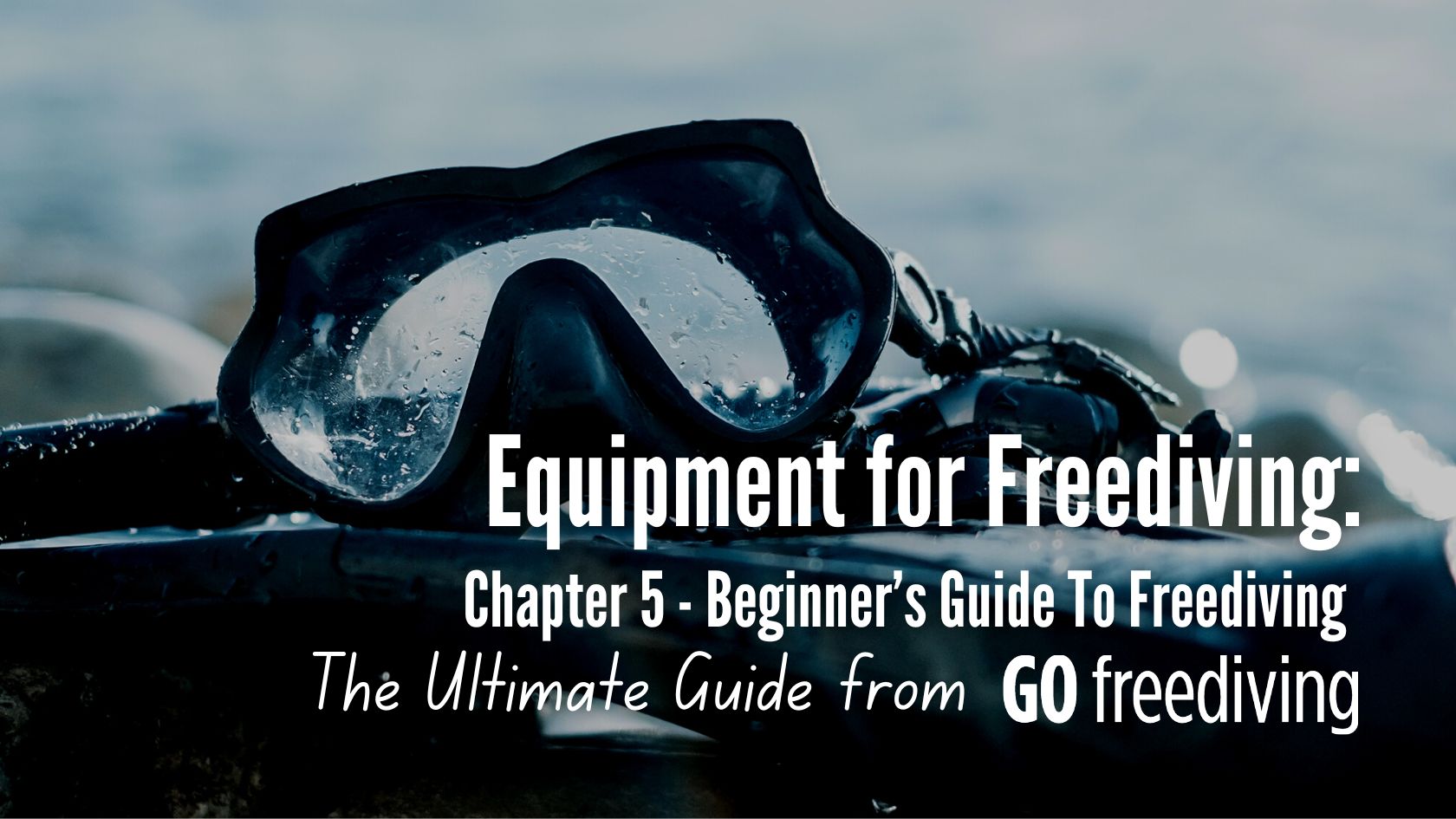
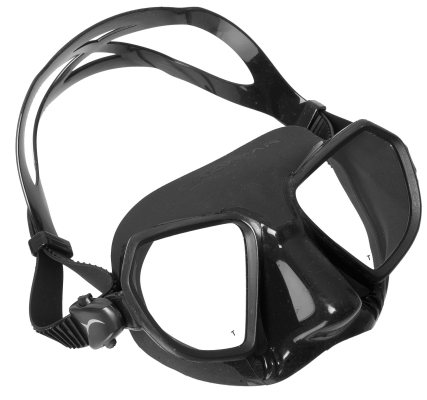


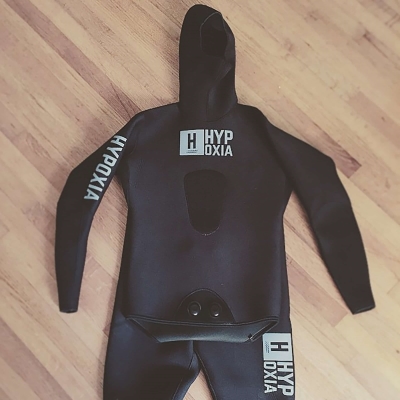
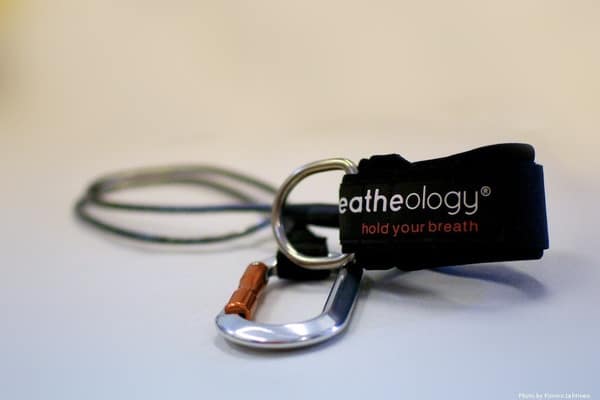



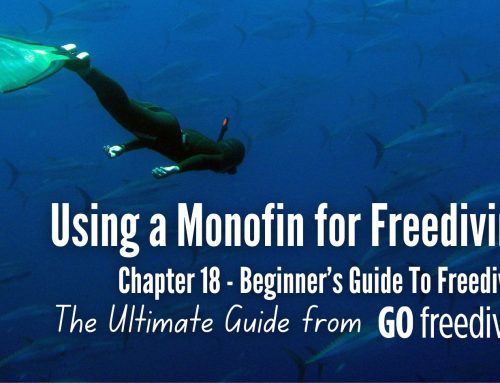
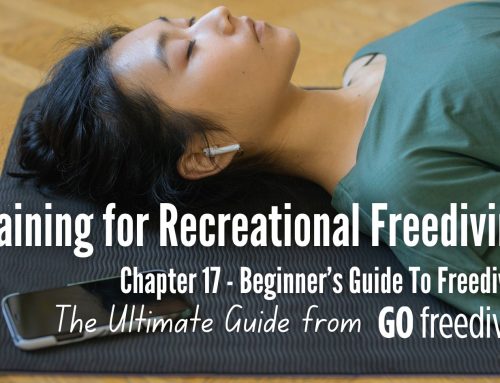
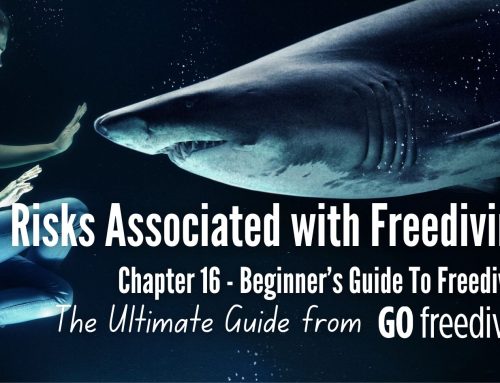
Leave A Comment